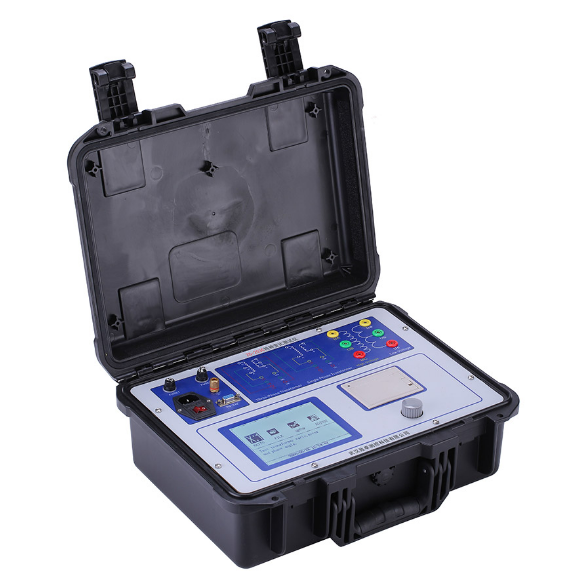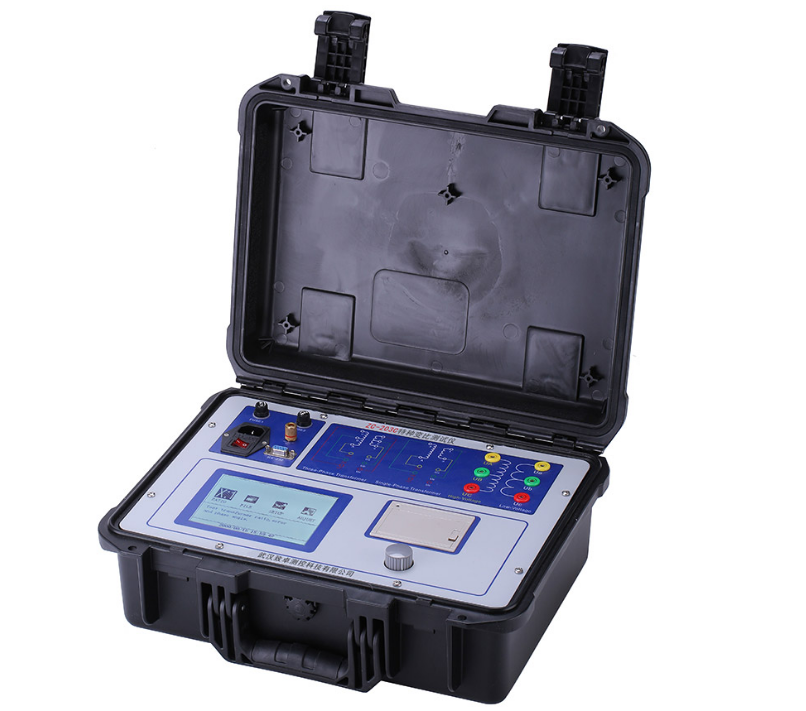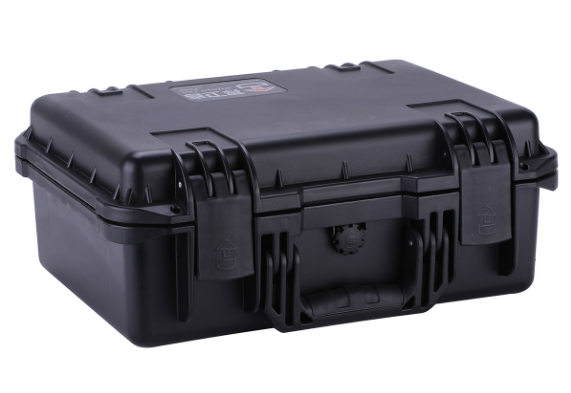There is a polarity relationship between the primary side and the secondary side of the power transformer coil. If there are several coils or several transformers to be combined, they need to know their polarity before they can be used correctly. For two coil transformers, if the induced potential in any instant has the same direction, it is called homopolarity or depolarization, otherwise it is called plus polarity.
In addition, the connection group of transformer is one of the important parameters of transformer, which is an important condition for parallel operation of transformer. In many cases, it needs to be measured. Zc-203c special transformer ratio tester is the third generation of professional transformer ratio testing equipment newly introduced by Wuhan Zhizhuo measurement and Control Co., Ltd. It can be used for three-phase transformer testing of power system, especially for Z-winding transformer, rectifier transformer and balance transformer testing.
1. Purpose and significance of transformer polarity group and voltage ratio test
Under the condition of no-load operation of the transformer, the ratio of the voltage of the high voltage winding to the voltage of the low voltage winding is called the transformation ratio of the transformer:
The voltage ratio is generally calculated according to the line voltage, which is an important performance index of the transformer. The purpose of measuring the transformer ratio is:
[1] Ensure that the voltage ratio of each tapping of the winding is within the range allowed by the technology;
[2] Check the correctness of winding turns;
[3] Determine whether the lead wire of each tapping of winding and the tapping switch are connected correctly.
2. Test method for polarity group and voltage ratio of transformer
[1] Determination of polarity of transformer by DC method
There are two methods to measure the polarity of transformer winding: direct current method and alternating current method.
DC method: connect a dry battery to the high-voltage terminal of the transformer, connect a milliammeter or microammeter to the secondary side of the transformer, observe the swing direction of the meter needle when the battery switch is closed during the experiment, and then determine the polarity.
[2] The group of transformer is determined by DC method;
[3] Use zc-203c special transformer ratio tester to measure the transformer ratio.
3. Precautions and result analysis
[1] When the polarity is determined by the direct current method, the test process should be repeated several times to avoid the wrong conclusion due to the fast swing of the needle.
[2] In the measurement group, for the transformer with large transformation ratio, high voltage and small range DC millivoltmeter, microammeter or multimeter shall be selected; for the transformer with small transformation ratio, low voltage and large range millivoltmeter, microammeter or multimeter shall be selected.
[3] The transformer transformation ratio shall be measured under each tap. When more than one coil has tap, it can be measured under all tap positions of each coil in turn, and the corresponding tap coil shall be connected to the rated tap.
[4] If there is a load regulating device, the electric operating device must be used to change and tap.
[5] During the whole measurement process, special attention should be paid to the fact that transformers A and a cannot be exchanged, otherwise the high voltage will enter the bridge body.
[6] When gradually increasing the test voltage, turn off the power supply for inspection when the voltmeter rapidly rises to full degree.
[7] For the results measured by the special transformer ratio tester, the sequence of voltage ratio of each corresponding tap should be the same as that of the nameplate; the allowable deviation of rated tap voltage ratio is, and the deviation of other taps should be within the impedance value of the transformer, but not more than.
The above is the whole content of this article. If you don't understand anything, you can consult our online customer service at any time.







